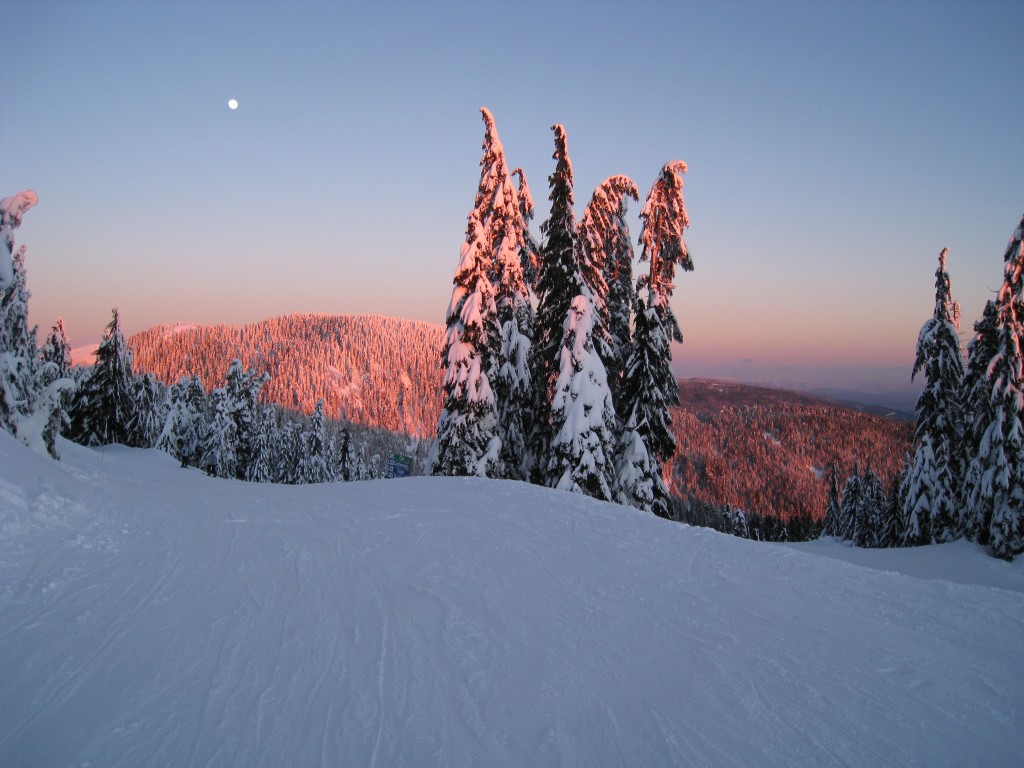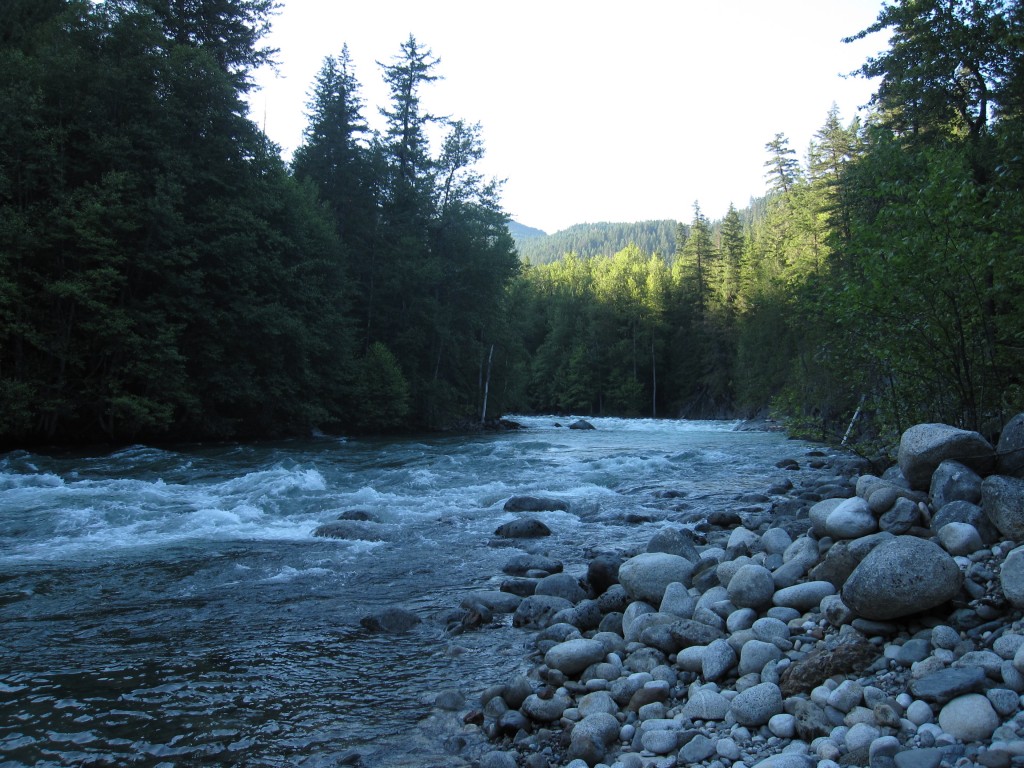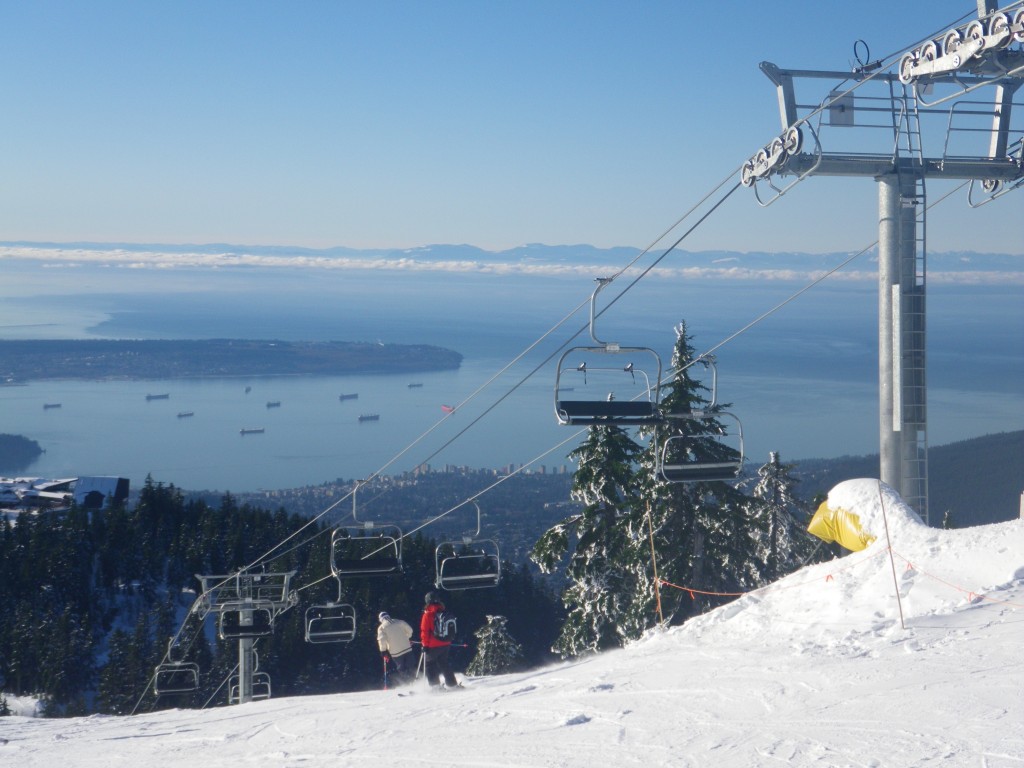I have never quite figured out how to describe the Pacific Northwest. There is no characteristic element there, nor is there a single place that encompasses everything it is; I can only talk about each piece of the puzzle in isolation. There is beauty in the lands, yes, but not beauty alone; there is lushness, but also danger; there is a dichotomy within a place that on one hand overflows with life, yet on the other may also be incredibly inhospitable.
Having been born and raised there, I am not so much the jigsaw artist but rather the assembler, trying to recombine the fragments of a sentiment, so that it can be recaptured and experienced by those who pass by and glance its way, even if they have never participated in the scene itself.
***
When you assemble a jigsaw, you often look for a few pieces that form an easily recognizable part of the original and work outward from there. For me, that makes the obvious starting point the urban: the rush of a population going to and from work, a seemingly instant connection to the rest of the world, a variety of extra-curricular activities, public transit, late-night sushi. The Northwestern city is often an odd blend of old and new, occasional brick buildings interspersed with towers of glass and steel. At night, the buildings reflect each other like a field of brightly lit mirrors; during the day, the streets bustle with the endless intersection of multiple cultures. Diversity sustains the world, and it sustains these spaces.
But we are not really here to experience the metropolis. Leaving your city of choice, you slide into a world where the millennia-old ecosystem is still dominant, the horizon the backdrop for an infinite undulation of evergreens alternating with peaks like shards of glass. Dense coniferous forest and old-growth giants envelop you; you may be one mountain ridge removed from the city, but life seems very far away. When you look down from the air, you feel that you are at the very edge of civilization, that the city is a stronghold, the last outpost before the forest rushes to claim you.
On the road from Whistler to Vancouver, you round a bend and the town is suddenly no longer visible. Driving past lakes, sometimes covered with ice half frozen, breaks radiating outward from one central point as though a spear had been thrown through the ice sheet, or past glacial rivers running over rocks like smooth marbles that are the only separation between you and the endless forest, it is almost impossible to believe you are traveling from one city to another. You are in a canyon, the walls formed by a boundless tapestry of green (forest), grey (mountains), slate-blue (rivers) and white (glaciers). The canyon is etched by the road, a fine silver thread. There is nothing else.
Once, driving out to the Callaghan Valley – a basin bounded by two volcanoes, several mountains, and a lake – in the middle of the night, on a twisting, two-lane mountain road, I accidentally turned my headlights off. To say I could see nothing would be an understatement. The dark was a curtain – it permeated the car. I could not see the road, the dashboard, or my hands on the steering wheel, let alone the edge of the mountain ahead of me. I slammed on the brakes.
On the way back later that night, I pulled off the road into a gravel rest-stop, turned off the car, and stepped outside. That winter we had been hit by a severe El Niño – so severe that Whistler seemed to be the only mountain with any snow remaining, although you still couldn’t ski to the bottom of the hill. It wreaked havoc on the resorts and the Winter Olympics, but for the moment it meant that I could stand outside in my highly reflective but not very warm volunteer jacket without shivering. The lights of the valley outpost were invisible, as were the lights of Whistler town. The only illumination came from the less-than-full moon, and the full spread of stars overhead – clearer than I had seen them since spending a few nights in the centre of Zanzibar. I stood there, and thought about how easy it was for me and my tin can of a car to erode away into the shadows.
***
Where the mountains and forests end, the ocean begins. The colours of the great Pacific melt together like so many layers of blue and green ink, cool rushes ready to paint the shore. To the west, the Strait of Georgia beckons. On a blustery summer day, the wind whips the water until you see nothing but cascading whitecaps, clear to the island and its mountains, where the landscape recreates itself all over again, as if refusing to be conquered by the ocean so quickly. In the rainy winter, if you’re lucky, you may even see the island’s snowcaps.
There are many that would escape to the tropics, where the water is warm and the air feels like a quilted blanket, but these frigid waters have sustained a thriving civilization, in all its forms – plant, animal, human – for thousands of years. Sometimes the existence of that other civilization is obvious, such as when a pod of orcas turns the harbour into its own personal playground for a day, heedless of swarming boat traffic. Kings of the sea, showing off their livery.
***
There is a kinship, and at the same time an intrinsic divergence, between ocean and river. Some ply their trade by the waves and the tides; others prefer the sweetness of freshwater and the white whip of rapids. Salmon bridge this gap, bringing the cornucopia of the open ocean upstream as they journey to instinctively remembered spawning grounds. They have been central to the cultures of the area’s First Nations for generations, and even the most entrenched city-dwellers have grown up with salmon and its symbolism as an integral part of their identity. The fish is the quintessential food of the west coast, ingrained in the coastal consciousness… thrown onto the ice at hockey games.
If the run fails – and it has, many times – the hand-wringing begins. The four-plus year journey from river to sea and back again is a grueling gauntlet of orcas, hungry bears, and fishermen, as well as dams, the whirlpools of diseases that are aquaculture installations, and other treacherous man-made obstacles.
The rivers themselves capture you at a completely different level. They are an intricate azure web of nerves across the landscape, stretches of calm, gently flowing water interspersed with frenzied churning around rocks. The sensory connections between the coast and the interior, where snow replaces rain and glacial lakes replace the ocean, the rivers convey you seamlessly from one mystical biome to another.
***
The one element that most confounds outsiders is the winter – and the accompanying rain. Although winter is tempered by the ocean and therefore mercifully warmer than the rest of the North, it nonetheless tests your patience. The price paid for living in a coastal climate is that the cold bites to your bone and brings with it endless days of grey. The Pacific coast receives the highest yearly rainfall in the country – the bounty of the airstreams that curl across the ocean and then barrel into and over the mountains, unloading a week’s worth of water as they go. Some days you open your curtains and find yourself pleading for a golden deliverance to sweep away the mist that clings to everything like a shroud of silver silk – but then you console yourself thinking that rain in the city means snow on the mountains, ready for you to crunch through on snowshoes or skis or snowboard, whichever your chosen method of travel. Whatever the case, the rain is the great unifier of all northwesterners. And when the sun does emerge – particularly after those few occasions that it does snow in the city, when white pillows grace the evergreens all the way down to the water level – and you can see every colour of the spectrum in the ensuing sunset, you think the rain is a small price to pay for such a gift of the gods.
***
Something intrinsic unites you with every mountain, tree, fleck of rock and drop of water. The landscape stretches into the distance, misty, infinite, recursive; you almost think it could unhinge you. You may be reborn, but only if you let it consume you.



